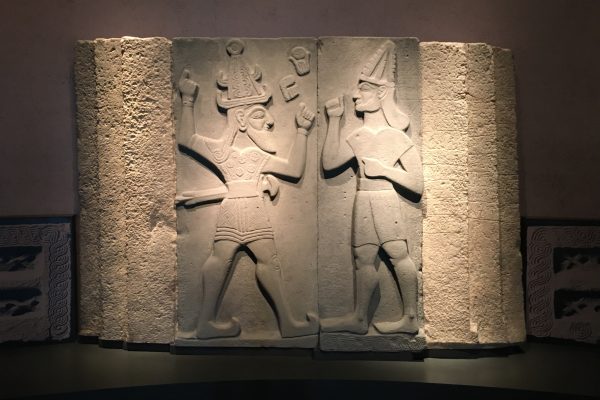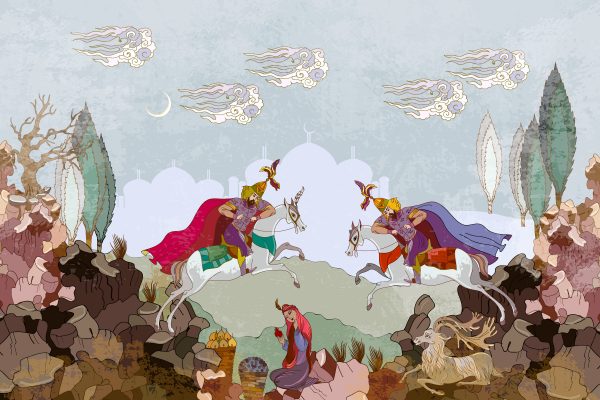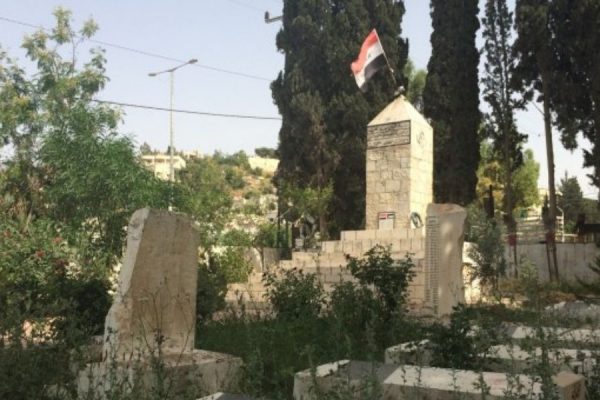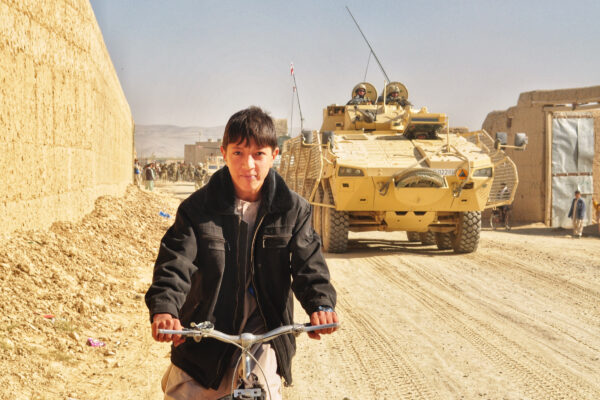In 2018/19, the Museum of Islamic Art in Doha, Qatar hosted an exhibition titled “Syria Matters”, a celebration of the rich cultural history of a country that nowadays is mentioned exclusively in the context of war and suffering. On the 10th anniversary of the beginning of its ongoing civil war, our author reminds us why Syria is so much more than that.
In 2018/19, the Museum of Islamic Art in Doha, Qatar hosted an exhibition titled “Syria Matters”, a celebration of the rich cultural history of a country that nowadays is mentioned exclusively in the context of war and suffering. On the 10th anniversary of the beginning of its ongoing civil war, our author reminds us why Syria is so much more than that.
Memory making is usually initiated after the conclusion of a historiographically relevant event or period: the statue that glorifies the valiant fighter of a bygone battle; the natural history museum that brings to life extinct animal species; the memorial that warns against the repetition of war and genocide.
Between November 22 2018 and April 30 2019, the renowned Museum of Islamic Art (MIA) in the Qatari capital of Doha memorialized a country that still exists and with which we are all familiar with, albeit for all the wrong reasons: since March 15, 2011, Syria has been experiencing a continuous civil war that began as part of the wider Arab Spring protests and — a decade later — has mutated into a multi-factional hodgepodge of domestic and international belligerents fighting the Baa’thist government of the Syrian Arab Republic and each other in a variety of constellations.
The catastrophic result both on the ground and in a metaphysical sense: large parts of the country have been destroyed and Syria has been reduced to a metaphor for war and human suffering. Ask anyone — especially in the Western world — what the first thing is that pops to mind upon hearing the word “Syria” and there’s a pretty good chance that person will say “war.”
Countering that reductionist narrative of a country which was once a center of Islamic civilization: that was the aspiration behind a special exhibition aptly titled “Syria Matters”, hosted on the ground floor of the architectural marvel that is the MIA, at a time before the ongoing COVID-19 pandemic would completely shut down cultural life around the globe. Designed by celebrity architect I.M. Pei, it is always a pleasure to stroll through the hallowed halls of this peaceful haven, and I had the privilege of catching this particular exhibition while on vacation in Qatar two years ago.

This museum’s counter-narration brought to life the long and rich cultural history of modern-day Syria with a mixture of classic presentation and modern infotainment, with over 120 exhibits, half of them international loans from Western capitals like Berlin, London, and Paris, on display (for the sake of accuracy it should be pointed out that it is not a case of serendipity that former colonial powers are in possession of historical artifacts originating from the Middle East and Africa, but an act of Western state-sanctioned organized crime).
The exhibition succeeded in resurrecting the Levantine past in such an engaging and educational way that I visited the MIA, which is located on an artificial islet off the city’s Corniche with the mesmerizing skyline of Doha’s business distract West Bay in the background, three times during my sojourn in Qatar, and not just to escape the scorching desert sun and cool down in an abode of air-conditioned tranquility.
Ugarit, Tell Halaf, Palmyra: pre-Islamic Syria
The chronologically arranged exhibition took the visitor on an expedition through the main periods of Syrian history, from the pre-Islamic era through the Golden Age of Islam in the Middle East to the days of the Ottoman Empire. I found myself strolling through a semi-dark maze punctured by illuminated glass showcases containing historical artifacts and immersive video installations of key sites, the emanating brightness of the past triumphing over the tragic darkness that is Syria’s present.
The pre-Islamic period alone is rich in cultural accomplishments and is a testament to how far back Syria’s heritage of ethnic diversity reaches. The ancient port and Bronze Age trading city of Ugarit for instance (its excavated ruins located in northern Syria in the outskirts of modern Latakia) is a good example of the country’s traditional multiculturalism: During its heyday between 1800 and 1200 BCE, merchants from Egypt and Palestine, the Aegean and Anatolia, lived side by side and did business with the local population.
Tell Halaf, an archeological site dating back to the 6th millennium BCE which lies near the Turkish border in northeastern Syria, is named after the Halaf culture, a prehistoric period known for its pottery emblazoned with animal designs. One of the most awe-striking showcases from this era: a colossal basalt statue of a bird of prey, a loan from Berlin’s renowned Vorderasiatisches Museum. This artifact was one of many that were excavated at the beginning of the 20th century and brought to the capital of the German Reich, only to be destroyed by Allied bombings in World War Two, after which the statue was painstakingly restored.
The fascination of 18th and 19th-century European orientalists with the ancient city of Palmyra (located in present-day Homs Governate) was evidenced by an oil painting depicting the defeated warrior-queen Zenobia watching the sunset on the eastern Roman empire in 272.
Painted in 1892 by Australian artist and suffragette Amy Bosworth, it is a copy of Herbert G. Schmalz’s original piece “Zenobia’s last look on Palmyra” from 1888. Bosworth, like many women of her generation, was drawn to this emblematic figure of female power who broke away from the Roman Empire by conquering the Roman provinces of Syria, Palaestina, Arabia Petrea (the capital of which was the famed Petra, like Palmyra a UNESCO World Heritage Site), Egypt and much of Asia Minor to establish the short-lived Palmyrene Empire, until the emperor Aurelian sacked the capital city and captured her.
While walking through this part of the exhibition, I was reminded of the semiotic shift of the name Palmyra: what once symbolized prosperity, power, and ancient culture, has forever become tainted with the indelible memory of ISIL/Daesh’s frenzy of cultural destruction in 2015.
Umayyad, Ayyubid, and Ottoman Syria
Syria’s Islamic history begins with the establishment of the Umayyad dynasty (661–750) which ruled the ever-expanding Muslim empire from its capital Damascus. At the height of this second caliphate after the death of the Prophet Muhammad, Umayyad territory stretched from Sindh on the Indian Subcontinent to Al-Andalus in Spain.
Digital renderings of the Great Mosque and the Citadel of Damascus on a curved video screen the size of a wall made me feel as if I had transcended time and space and were experiencing first hand the cultural heyday of that dynamic and tumultuous period of Islamic history. The legendary Kurdish Saladin, who led the Muslim campaign against the Crusaders in the Levant and founded the Cairo-based Ayyubid dynasty (1170–1260), moved the capital of his empire to Damascus in 1174.
Everyday objects, such as intricately designed chess and backgammon sets as well as written documents such as Quranic fragments, gave the grandeur and excitement of that period a more grounded and mundane feel.
After Sultan Selim I defeated the Mamluks in the Battle of Marj Dabiq near Aleppo in 1516, the region of Syria became part of the Ottoman Empire, initiating the beginning of the end of the Mamluk Sultanate that succeeded the Ayyubids and ruled Egypt, the Levant, and Hejaz at its height. Fun fact about Selim I, also known as Selim the Grim: despite his short tenure as Sultan, in the eight years of his rule the territory of the Ottoman Empire had expanded by seventy percent.
The most impressive exhibits from that period of Ottoman Syria I found to be architectural ones: an intricately designed sizable double-door and two inscription panels of a traditional Damascene house dated 1816/17: carved out of wood and painted in what is called the ‘ajami technique (meaning “non Arab” or “Persian”) where a thick paste of gypsum and glue is applied to create raised designs, they are then painted with a gold leaf finish.
Empathic Historiography
In his essay “The Use and Abuse of History” from 1874, the German philosopher Friedrich Nietzsche debates the benefits of a “monumentalist observation of the past, the preoccupation with the classic and the rare of former times.” He comes to the conclusion that history’s lesson for the present is to learn that if greatness has been possible once, it can be possible again.
This is exactly the point the organizers of “Syria Matters” tried to make: to rekindle hope after what was at the time eight years of war and to resurrect the belief in the possibility of better times, reminding the visitor that Syria’s glorious past was once a reality and could therefore be replicated in the future, no matter how grim and hopeless the present.
“For over seven years, Syria has been experiencing the worst human and cultural tragedies worldwide,” said the info panel at the entrance to the exhibition. “It is for this reason the Museum of Islamic Art has chosen to draw attention to Syria’s unique cultural heritage, illuminating its key role in artistic and intellectual world history.”
But the most memorable part of the exhibition was not necessarily the archeological artifacts and paintings showcasing Syria’s “key role in artistic and intellectual history” and which cost the organizers millions of dollars to obtain, but something far more understated: the round tour through Syria’s monumental history ended with the visitor arriving in present-day Syria when passing by an alcove in which stood a black and white wall mural depicting an aerial view of a thoroughly destroyed Syrian cityscape.
Attached to this oversized photographic panorama were little notes written by visitors and answering the question posed on a sign at the entrance to this last section of the exhibition: “How does it [Syria] matter to you?” I stood before this interactive analogous wailing wall and read the messages of commiseration and solidarity from my fellow museum-goers: “No one should suffer a fate like this,” wrote one person. “We love Syria and hope it will be better one day. We should all help it in any way we can,” the anonymous note went on to say.
Arab history, told by Arabs
To this day, much of Arab history is told through the lens of the colonial gaze, the Eurocentric canon of elitist memory-making still taking precedence over a people’s historiography. Artifacts stolen from throughout the MENA region by white archeologists and orientalists, who deemed the natives so incompetent and unworthy of preserving and telling their own history that this justified the looting of their cultural treasures, remain forcibly exiled in the colonial museums of European capitals.
During my multiple sojourns at the Museum of Islamic Art on that trip to Doha, it was refreshing to see that the richest nation on earth is using its vast financial resources to reclaim some of that history of the Arab peoples. With an annual procurement budget of a billion US-dollars (source: Bloomberg), the Qatar Museums Authority (QMA) as the driving force behind the country’s transformation from a petro economy on borrowed time to a sustainable knowledge economy is well on its way to expand its own collections and correspondingly the Gulf nation’s cultural clout.
As is often customary after visiting an exhibition, I remember stopping by the museum gift shop on my way out and seeing something that — at least in my romanticizing mind — symbolized a shift in teacher-student relations and was wholly in keeping with the globalized nature of power relations where the formerly colonized have steadily been turning the tables on their former colonizers: a white female tourist who was standing next to me and also looking at the books on display reached for a copy of Amin Malouf’s “The Crusades: An Arab Perspective” and began perusing it with authentic interest.
Well, whadda ya know, I remember thinking, white people are capable of seeing further than the end of their own noses. They just need to be given the space to do so.
Qatar’s Museum of Islamic Art is such a space. And its “Syria Matters” exhibition gave local and international visitors a fascinating glimpse not only into the rich cultural history of the Islamic world, but also into a country whose people and past deserve far better than to be reduced to media images of refugees vegetating in tented camps and of cities reduced to rubble by aerial bombardments.
On the 10th anniversary of the ongoing war in Syria, we should all take a moment to appreciate the country’s glorious past and empathize with its tragic present.





